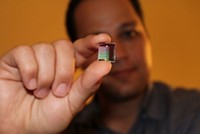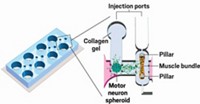Advertisement
Grab your lab coat. Let's get started
Welcome!
Welcome!
Create an account below to get 6 C&EN articles per month, receive newsletters and more - all free.
It seems this is your first time logging in online. Please enter the following information to continue.
As an ACS member you automatically get access to this site. All we need is few more details to create your reading experience.
Not you? Sign in with a different account.
Not you? Sign in with a different account.
ERROR 1
ERROR 1
ERROR 2
ERROR 2
ERROR 2
ERROR 2
ERROR 2
Password and Confirm password must match.
If you have an ACS member number, please enter it here so we can link this account to your membership. (optional)
ERROR 2
ACS values your privacy. By submitting your information, you are gaining access to C&EN and subscribing to our weekly newsletter. We use the information you provide to make your reading experience better, and we will never sell your data to third party members.
Biological Chemistry
Airway-on-a-chip smokes cigarettes to study respiratory disease
Microfluidic device lined with human cells produces same smoking biomarkers as patients with COPD
by Matt Davenport
November 2, 2016
| A version of this story appeared in
Volume 94, Issue 44


A microfluidic device has started smoking to give researchers a new window on one of the world’s leading causes of death.
Developed by Donald E. Ingber’s team at Harvard University’s Wyss Institute, the device uses a mechanical respirator to “inhale” cigarette smoke and pass it through a microfluidic airway lined with living human cells. The researchers engineered the system to mimic human smoking habits—including puff duration and frequency—and found that it produces the same biochemical hallmarks observed in smokers with chronic obstructive pulmonary disease, or COPD (Cell Systems 2016, DOI: 10.1016/j.cels.2016.10.003).
The team believes the platform could one day help develop and test new therapies and diagnostics for COPD. The respiratory disease was the world’s third-most common cause of death behind ischemic heart disease and stroke in 2012, the most recent year with data published by the World Health Organization.
In the near term, the team says its airway-on-a-chip provides a new way to examine how smoking affects people with healthy lungs and patients with COPD. Those very patients provided the cells cultured to seed the microfluidic devices.
“We could ask what the effects of cigarette smoke are in a very direct way on a specific patient’s lung cells and compare that with other patients,” Ingber explains. For instance, the team showed that cells from COPD patients generated roughly double the amount of interleukin 8, a signaling protein involved in immune responses, as healthy cells when exposed to smoke, Ingber says.
The researchers further validated the observations made with their cell-on-chip devices against available data from previous human COPD studies. “Not only did the researchers develop a great new in vitro model, but they were also asking themselves how closely their model was mimicking the in vivo situation,” comments Carole Mathis, a cellular systems biologist at Philip Morris International.
Advertisement
But the device may also reveal features of the disease invisible to animal and even clinical studies of COPD, Ingber adds. The airway-on-a-chip’s polydimethylsiloxane construction is transparent, allowing microscopes to observe the tissue with single-cell resolution.





Join the conversation
Contact the reporter
Submit a Letter to the Editor for publication
Engage with us on Twitter